Why one woman agreed to become an ‘Immortal Corpse’ for science
“The Immortal Corpse” is part of National Geographic’s special-edition, single-topic issue on “The Future of Medicine,” available online now and on newsstands Dec. 21.
When Susan Potter first approached Dr. Vic Spitzer about having her body sliced up 27,000 times and turned into a digital cadaver, Spitzer said he wasn’t interested.
“She told me she had diseases and said that she really wanted to try to help medicine,” Spitzer, a professor of cell and developmental biology at the University of Colorado Anschutz Medical Campus, told ABC News. “I told her, ‘We try to teach anatomy with people who don’t have disease. We’re not trying to teach disease or abnormality, we’re trying to teach normal.'”
“I told her, ‘You’re not what we’re looking for,'” he added.
Potter had gone through 26 surgeries by the time that she rolled her wheelchair into Spitzer’s office in 2000. She had also been diagnosed with melanoma, breast cancer and diabetes, among other diseases.
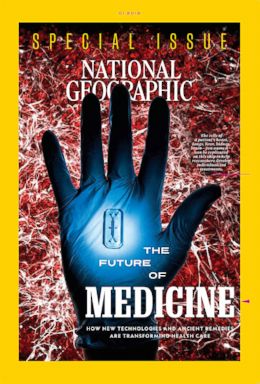
But Potter told Vick she was determined to take part in the Visible Human Project. Funded by the National Library of Medicine, it sought to turn real bodies into digital ones so they could be used to teach anatomy and physiology to medical students. Data from the Visible Man was made public in 1994 and data from the Visible Woman was released in 1995, according to the National Library of Medicine.
Spitzer had worked on the project but told Potter it had ended. Still, she persisted — she wanted her body to be used for medical education. Spitzer realized Potter’s could be one of the first bodies to line his digital “bookshelf.”
“The goal someday is to have enough bodies on your ‘bookshelf’ that you can pull out the body that makes the most sense to simulate the pathology or procedure,” Spitzer explained.
As an example, he said, a body could be used to teach students where to poke a needle for a liver biopsy — a procedure that’s a little more difficult than finding a vein near the surface of the skin.
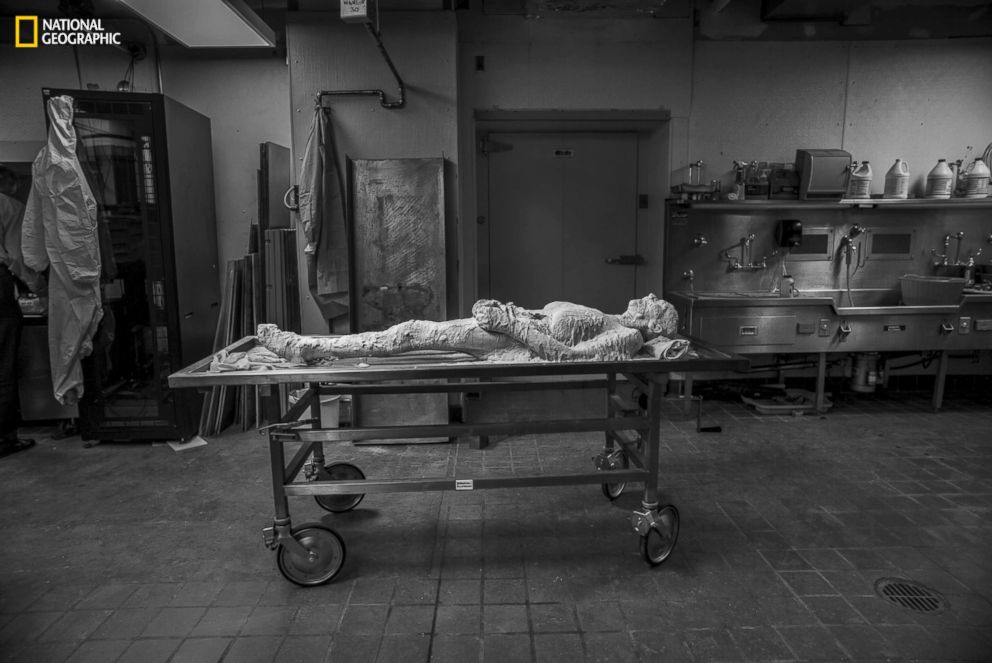
And so Spitzer agreed to do to Potter what the Visible Human Project had done to a far healthier man and woman. But he gave her one condition: Potter had to be followed for the remainder of her life.
Spitzer approached the senior science photo editor of National Geographic magazine, Kurt Mulcher, to pitch Potter’s story. He believed she would only be alive for another year. But she lived for another 15 years, dying at age 87 from pneumonia.
“Time tells good stories, and this is an extreme example,” Mulcher told ABC News of the story, “The Immortal Corpse,” which will appear in National Geographic’s “The Future of Medicine” issue. “This is the longest-in-the-making feature story we’ve ever done.”
Spitzer wanted to digitize her body, but he also wanted to gather her thoughts and behaviors in audio recordings, so that medical students could understand her pain and anguish and hear why, in her own words, she made certain decisions regarding her health.
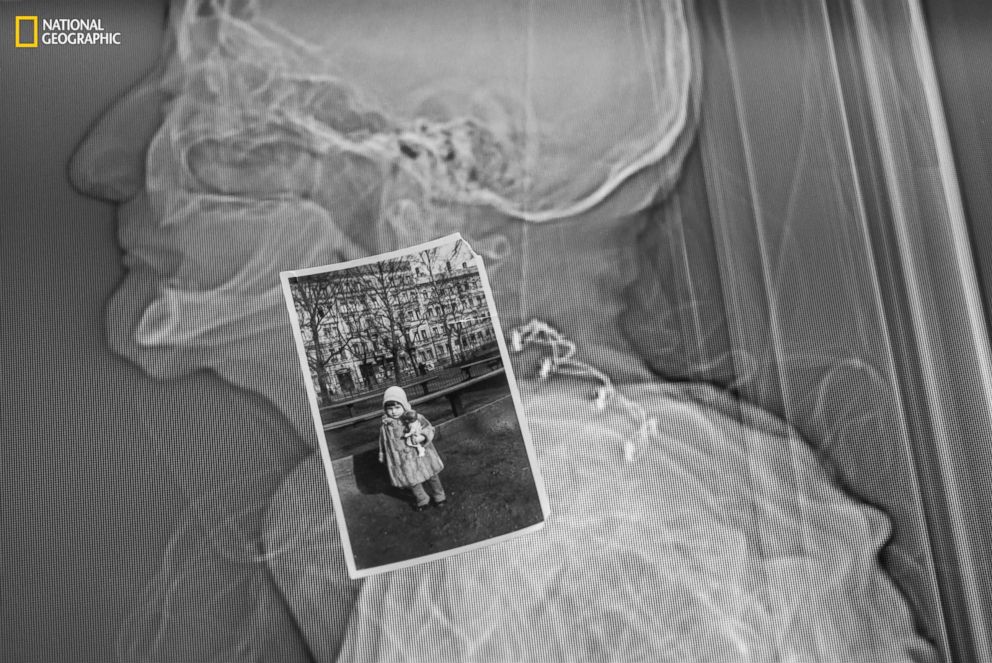
“For her to talk to you about her body and how she felt — her disabilities, which bothered her a lot — that’s a different dynamic. That’s not learning about her anatomy and physiology, it’s learning about her humanity,” he said.
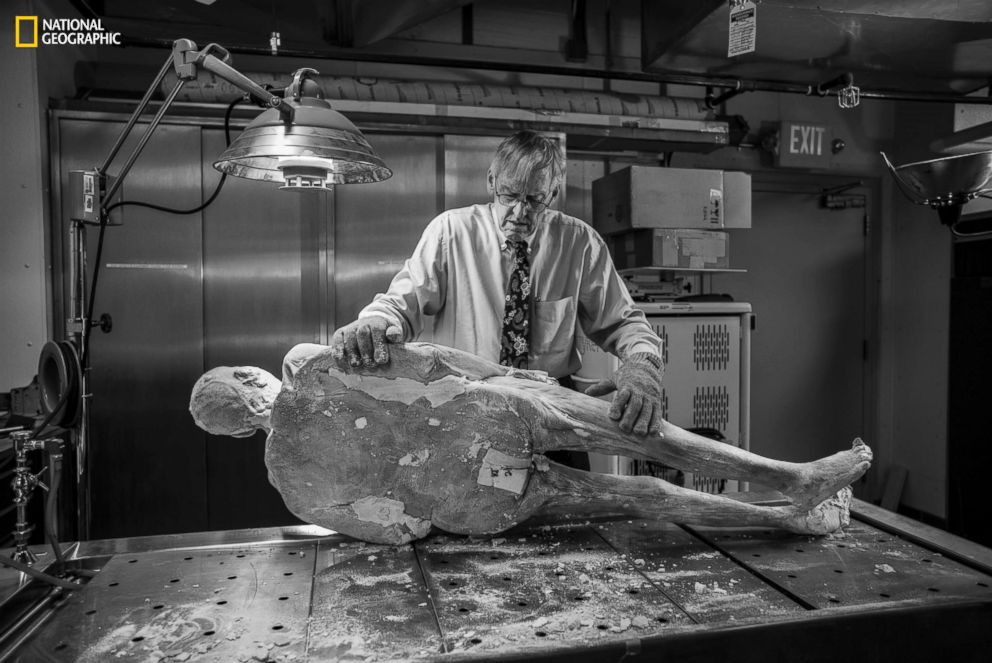
During the time that she was followed, Potter asked to see the knife that would cut her up, and the freezer where she would be entombed beforehand.
“I showed her in detail the blade that I had mounted on there; the blade that would be used. I didn’t turn it on. And she said, ‘Well, that looks really cold,'” Spitzer said.
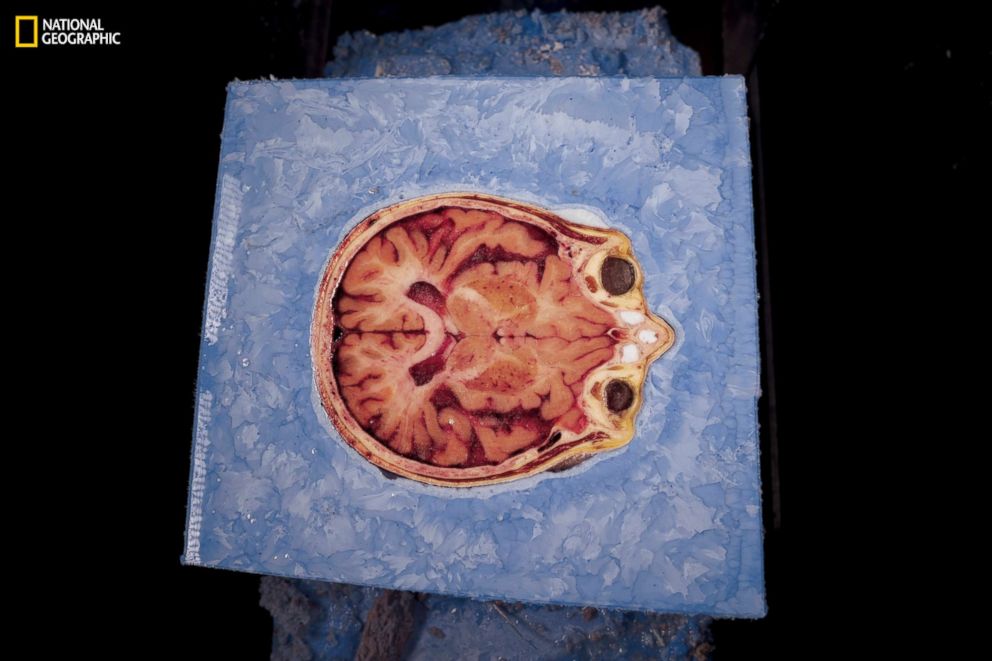
Mulcher said that the magazine’s idea was to photograph Potter in black and white while she was alive so that only her digital images would come out in color — a goal that, 16 years later, has come to fruition.
“In a way, she was reborn in a virtual world,” he said. “So I think from an artistic perspective, it marks a transition from one life to another.”
This story is a collaboration between National Geographic and ABC News, whose parent company is Disney.
Source: Read Full Article



